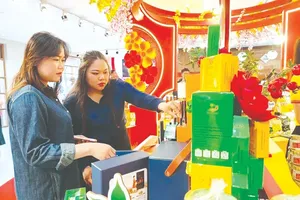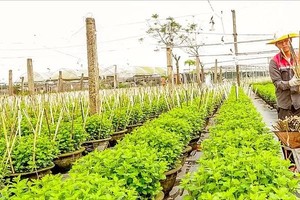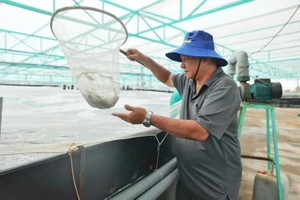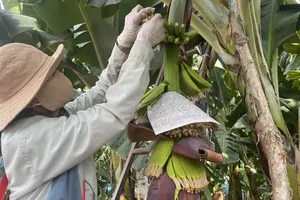Several handicraft villages that have been producing items for export are now facing a serious downturn in the global export market as the world economy continues to be in turmoil and because of increasing competition in similar products from other Asian countries.
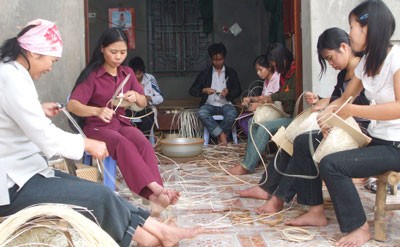
Phu Vinh handicraft village in Chuong My District that produces beautiful rattan and cane items is located only 25km from Hanoi. The village is well-known for hundreds of handicraft products like baskets, lamp-shades and tea trays, mainly produced for export to the US and European markets.
Just a few years ago the village had nearly 8,000 workers who specialized in making these export items, besides thousands of others that were outsourced to nearby villages and communes.
Businesses in the village exported at least one consignment every alternate day to Taiwan (China), Republic of Korea and Japan. However, now with no orders, inventories lie unsold.
Nguyen Thi Thu, owner of a production unit, laments that her units used to receive orders from foreign buyers every week a few years ago and they worked round-the-clock to meet orders. But in the last two months they have not received any new orders.
Vuong Van Can, deputy chairman of the People’s Committee in Phu Nghia Commune where Phu Vinh Village is located, said that 60 percent of workers in the village have given up working in the handicraft industry.
Only few households are still operating but their products are mainly sold in the domestic market. Revenue from handicrafts in Phu Vinh Village plunged to only VND70 billion (US$3.3 million) in 2011, about half of that in previous year.
One of the factors leading to the drop in exports is huge competition from China, Thailand and Indonesia.
The increase in costs of basic raw material is another reason. Four years ago, a kilogram of rattan cost only VND4,500, which now costs up to VND12,000.
Pham Mai Huong, owner of a silk weaving unit in Ha Dong District of Hanoi, said that unsold conditions have caused huge inventory of Chinese silk. Chinese products are priced much lower than Van Phuc silk, which is more sophisticated and beautiful.
Similar fate for wooden furniture
Eighty percent of wooden furniture made in Van Ha and Dong Ky villages in Dong Anh District of Hanoi and Tu Son District of Bac Ninh Province respectively, are mainly exported to China. As a result, when the Chinese market stopped importing, several businesses were taken by surprise.
Vu Van Lien, owner of a wood furniture unit in Dong Ky, said that he has five workshops producing nearly 20 wooden furniture items each month for export to China. However since the beginning of the year, he cannot export any of the items.
Duong Van Canh, chairman of Dong Ky Commune People’s Committee, said that since early 2011, the price of many commodities including electricity, coal and wood have escalated.
Businesses had to borrow at high interest rates to remain in operation. This combined with unsold items caused 30-40 percent of units in Dong Ky Village to shut down or operate perfunctorily.
As a result banks began to tighten monetary policy by the end of last year. Since the beginning of 2012, several businesses wanted to resume operations to target new markets but they could not because of lacking capital.
Related article:
Handicraft villages face hard times










